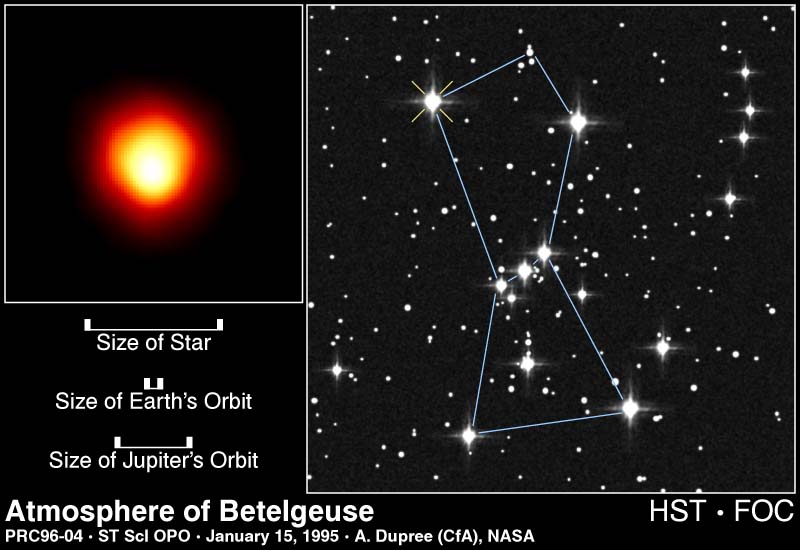111 Measuring a Star’s Size – The Challenge (Graded Reading)
Janice Hester
One of the fundamental properties of a star is its size. In the next few weeks, we’ll learn that a star’s size is a hint at the processes taking place inside of it. For example, toward the end of their lives, the nuclear processes inside a star start to change. The new nuclear processes require hotter temperatures, take place at greater pressures, and occur faster. The increase in energy trying to escape the star causes it grow and become a giant or a supergiant.
On the other hand, the large majority of stars are about the same size. Some stars are many times more massive and luminous than the Sun, but aren’t much larger. For example, Sirius shines 25 times brighter than the Sun, but its radius is only 1.7 times as large as the Sun’s. This tells us that a star like Sirius is denser than the Sun, with greater pressure, density, and temperature at its core.
Unfortunately, the stars are so far away that their sizes are incredibly difficult to measure directly. We can see why with a counterexample. Here’s a Hubble Space Telescope (HST) picture of Betelgeuse, a red supergiant, the same class of star as the largest stars shown in the video above.

Betelgeuse has a radius 887 times larger than the Sun, an HST image of it looks like a fuzzy dot, and we’re thrilled to be able to image it at all. Betelgeuse is huge; if you put Betelgeuse in our solar system it would extend past the orbit of Jupiter (shown in the figure). But it’s also over 600 light-years away, which means its angular size on our sky is quite small.
Most stars can’t be resolved, even with a large telescope, because their angular diameters are just too small. They aren’t as large as Betelgeuse and they are tens or hundreds of light years away.
When you look at pictures of bright stars, you’ll see that the images are clearly spherical, not just dots or points of light. Unfortunately, this is not what these stars actually look like. The circular image you’re seeing, which is frequently accompanied by rays, rings, or a fuzzy glow, is created by light reflecting and interfering with itself inside of the telescope. (Ironically, telescopes with better resolution show stars as smaller dots… they create a sharper image.)
We can determine the sizes of stars, but not by measuring their sizes directly. The online textbook discusses several methods, but we’re going to focus on one of the most basic. By simplifying a star, and imagining that it is a giant spherical blackbody, we can estimate its size if we know its luminosity and temperature.
